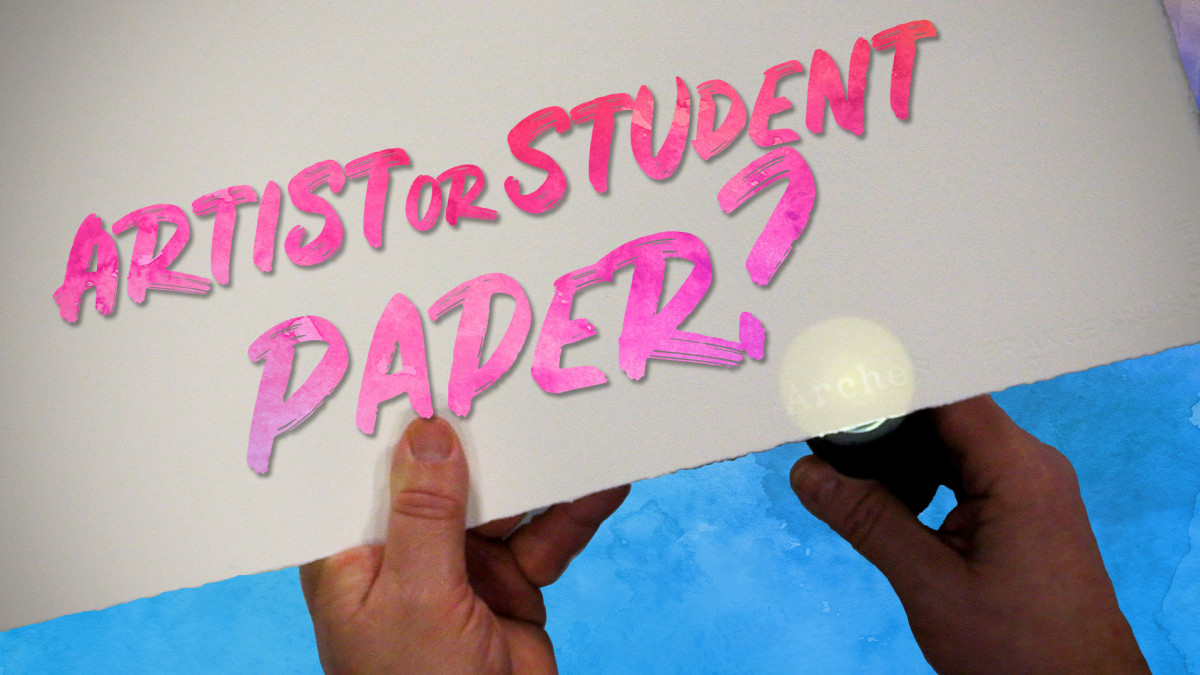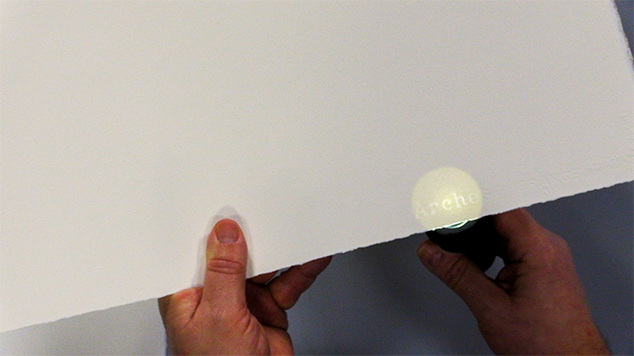Is Artist Grade Paper Worth the Money?

8 key factors to consider when choosing between Artist and Student grade watercolor paper.
If you’re just starting out with watercolor painting, it can be tempting to purchase student grade paper. There are several key differences between the two types of paper that you should consider before buying watercolor paper.
Key Takeaways
1. Student grade paper is less expensive than artist grade watercolor paper but there are noticeable differences.
2. Durability is extremely important when choosing paper. Cheaper watercolor paper can buckle and curl.
3. Sizing is added to most watercolor paper. The amount of sizing added depends on the grade of paper, which should be considered when choosing watercolor paper.
Student vs Artist Grade Paper: 8 Important Differences
1. Content: The results you get on student grade paper are very different than what you get when using artist grade paper. This is largely due to the composition of the paper. While artist grade watercolor paper is made from 100% cotton, student grade paper is made of a cotton/wood pulp blend or 100% pulp. Paper companies do this as a way to cut the cost of the student grade paper.
2. Cost: As mentioned above, student grade paper is less expensive than artist grade watercolor paper. The difference in price can be significant, so it’s fair that people get hung up on the price tag. One way to cut down on artist grade paper cost is to buy full sheets, 22’ x 30’ and rip or cut it down to 1/2, 1/4 or 1/8 size. Since larger sized paper is less expensive than buying more sheets of smaller sized paper, you’re able to save some money.
3. Durability: Durability is extremely important for watercolors paper. It must be able to take on a lot of water, multiple washes and scrubbing to lift paint. The difference between artist and student grade is in the content of the paper. Student grade paper is typically made from wood pulp or recycled materials while artist grade paper is made from 100% cotton fibres which are much more durable than wood pulp. You’ll find that student grade papers will sometimes buckle and curl when overloaded with water and the surface will shred with excessive brushing. While, artist grade paper will withstand many wash and dry cycles and scrubbing to lift paint. It may still curl, but it and it can be easily be reshaped and flattened when dry.
4. Sizing: Sizing prevents watercolor paint from soaking straight through the paper. When paper is made, manufacturers add a gelatine called sizing to allows the paint to stick to the surface and only become partially absorbed into the paper. Sizing can be applied internally or externally. Internal sizing is when the gelatine is added to the water and cotton mixture before it is put into the mold. External sizing is applied as a wash after the paper is made. High quality paper is sized both internally and externally. Internal sizing make the paper more durable to scrubbing or scratching. Student grade paper only has external sizing so it will not withstand multiple washes or scrubbing.
5. Washes: Artist grade paper allows for three to four washes of paint. Student grade only allows for one to two. Since you’re able to build up color on artist grade watercolor paper, you get a much richer color compared to student grade.
6. Texture: Watercolor paper are generally made with three different surface textures; hot press, cold press and rough. Hot press is a very smooth surface favoured by artists who use fine details in their work like botanicals or architecture. It is finished by pressing the paper through 2 hot metal rollers. Cold press is the most commonly used paper. It has a slight texture or “tooth” that allow pigment to settle in to the dimples of the paper to give a slight texture to the painting. it is finished by rolling through cold metal rollers. Rough paper has much larger dimples on the surface to allow more granulating pigments to be enhanced. It is well suited to loose, bold painting styles. The rough texture makes it difficult to paint fine details and smooth lines. It is finished by pressing between textured felt during the drying process.

7. Edges: Watercolor paper is made three different ways; hand-made, mold made and machine made. Hand-made paper usually has a ragged or deckled edge. Mold made paper is the most common type of artist grade paper. Many molds have deckled frames on the press which replicate hand made paper, such as Arches Aquarelle. Machine made paper is common in student grades and usually has straight edges. A caveat about edges is that all pads and blocks of paper are cut so you will only find deckled edges on full sheets of paper.

8. Watermark: Many manufacturers of artist grade watercolor paper will add a watermark to their full sheets to prove its authenticity. The mark will read correctly for the top side of the paper which has the most consistent texture.

Final Thoughts
When buying watercolor paper, you’ll inevitably encounter the student vs artist grade paper debate. You might think that as a beginner, you don’t need the best supplies to start out. However, having quality supplies will give you a much better experience from the start and will encourage you to continue working with watercolors. So, next time you’re buying watercolor paper, be sure to buy artist grade.
Interested in learning more?
Check out our youtube video on this subject with Arts of Course instructor Jess Rice.
You may also want to read 16 simple things to know to begin with watercolors and create successful paintings.
Download our free Top 10 Watercolor Tips by 200 passionate painters
Categories: : Watercolor Paper, Watercolor tips
 Greg Nosaty
Greg Nosaty 